Over the weekend a question was in the Polar/Look Power meter review post on the state of Bluetooth Low Energy/Smart and some of Polar’s long term plans for the space. It seemed like this might be a good time to recap where we stand on the technology and its use in sports.
The brother of another mother: Bluetooth Low What?
But first – let’s explain what this is and why you care. Bluetooth Low Energy (BTLE/BLE) is not regular old Bluetooth that you’ve been walking around the grocery store jabbering on your headset for all these years. Nope, it’s different. As the name implies – it’s low energy (actually, the name has changed a bunch as you can see, but it’s all the same thing – officially it’s now called Bluetooth Smart). Anyways, it means that instead of your Bluetooth device requiring recharging almost every day like your typical Jawbone earpiece might, these new sensor devices can go a year or more. Note that most of the time BTLE refers to sensors, versus heavy-battery requirement devices.
In many ways, the sensor side of the technology is very similar to ANT+, which most of you are already familiar with, by way of Garmin heart rate straps and all the competitor companies that also use the technology. Both last about the same timeframe on typical coin cell batteries, and both aren’t compatible with full-on regular Bluetooth.
Speaking of which, how does BTLE differentiate itself from regular Bluetooth of the years past? Well, in order for any Bluetooth device to talk to a BTLE device, it has to be Bluetooth 4.0. BT4.0 is relatively new, with the first major phone supporting it only coming out last fall (iPhone 4s). Since then it hsd become more commonplace on mobile phones, and virtually everyone expects it to be the defacto Bluetooth standard pretty quickly.
But that’s still an important sticking point. Those iPhone 4 or 3GS folks (or anything else) can’t use it. Meaning that if you have an older phone and go out and buy a fancy BTLE accessory, it’s as good as a not-so-heavy paperweight.
Sports? I thought Bluetooth was for talking in the grocery store?
Up until this point, sports devices that needed to communicate digitally and have long battery were largely using ANT+ (except Polar devices, which used their own protocol – WIND). In doing so virtually the entire industry (again, except Polar) standardized on ANT+ devices. Today, you can take that older Garmin FR305 with the heart rate strap you got 3+ years ago, and use it with a new Timex Run Trainer you picked up this weekend, and then use it with the CycleOps Joule GPS you’d grab later in the fall. Despite ANT+ (Dynastream) being a wholly Garmin owned subsidiary, it operates somewhat separately (in an entirely separate country in fact, up in the mountains of Alberta, Canada). With that separation, the rest of the industry has largely gotten onboard ANT+ (300+ companies), which is why you see devices that are absolute competitors of Garmin, still using the Garmin owned technology (ANT+).
But the challenge with ANT+ has been mobile phone penetration. Today, only a handful of handsets have ANT+ chips built-in. These would be phones like the waterproof Sony Xperia Active that I reviewed last year, as well as the HTC Rhyme. But beyond these, we don’t see significant mainstream pickup of ANT+ in phones – making it difficult for most consumers to see the benefit of ANT+ on their mobile phones (it’s like a Lotto ticket, you can’t win if you don’t play).
In order to solve that, we saw companies like Wahoo Fitness come out with their Wahoo Fitness iPhone adapter, which virtually the entire ANT+ industry uses now to develop apps for the iPhone/iPod/iPad platform, enabling you to access any ANT+ data stream on your phone (heart rate, speed, cadence, power, etc…).
The challenge with this of course is having some doohicky sticking out the bottom of your phone. Hence the larger industry push for integrated chipsets into the phone.
(P.S. – Yup, you can transfer your workouts off of most Garmin Forerunner devices, via the Wahoo Fitness Adapter)
Which, brings us back to BTLE. With BTLE having their older sibling of regular Bluetooth already in virtually every phone on the planet – it’s an easy jump to have companies simply upgrade to the next hardware version of Bluetooth in their newer devices, which now support the low-energy sensors that compete directly with ANT+.
At this point, one can see how and why sports companies would be interested in using BTLE over ANT+, since it means their market potential is anyone with a phone. Versus before being anyone with a compatible running/cycling/sports device.
Playing nice in the sandbox…or not.
Now normally, you might think the story would end at the above, with new BTLE devices and your phones going off to do the romance dance. But in reality, it’s been far from a first good year in BTLE land as far as sports go. Let’s do a bit of a recap.
October 4th, 2011: iPhone 4s announced with BTLE support
October 18th, 2011: Motorola announced Motoactv with BTLE and ANT+ support
December 2011: Wahoo Fitness announces first BTLE heart rate strap: Blue HR
At this point, we’ll take a brief break. By December, I had all three Bluetooth Smart devices. So naturally, I tried to get them to work together. The Wahoo strap and the iPhone with apps specifically designed to work with the Blue HR strap worked great. But the Motoactv and the Blue HR? Not so much initially. Didn’t really work at all.
In fact, this is where things get really messy. See, in the ANT+ world, there’s a concept called a ‘device profile’, which basically states how devices interact with each other. There’s a ‘heart rate’ device profile, which dictates exactly how a heart rate strap should always work…always. There’s a ‘power meter’ device profile, a ‘speed sensor’ profile, a ‘speed-cadence combo sensor’ profile, and on and on – nearly 30 or so of these things ratified by ANT+ member companies. All of them with specific instructions on how devices communicate.
But with Bluetooth Low Energy, it’s a bit more of the wild wild west. Now, that can be both a good thing and a bad thing. It’s good in that it allows anyone to do just about anything with it. You can make a ‘bread machine’ profile if you wanted. The trick is – how does anyone else know how to speak ‘bread machine’? And that’s where things got ugly.
Initially, there were some standards defined in the world of BTLE with the heart rate devices (similar to device profiles) – but as it became clear shortly after playing with all the devices, not all companies implemented them the same way. Thus, the timeline continues:
January 2012: Motoactv releases update to fix Blue HR incompatibilities
January 2012: Polar announced H7 Bluetooth Smart HR strap
Late Spring 2012: Polar H7 strap makes it to market, works with Motoactv
Later Spring 2012: Motoactv releases update that breaks Polar H7 strap functionality, but still allows Wahoo strap to work
May/June 2012: Wahoo Fitness releases Blue SC (BTLE Speed/Cadence sensor), currently not supported on Motoactv, only iPhone apps
Now you see the next challenge. Wahoo Fitness innovated (innovation is good) and announced a new product (above, Blue SC), one that simply replaces the existing ANT+ speed/cadence sensor with that of a Bluetooth Smart one.
This works great with those apps on the phone platform that specifically are updated to support it (not all apps by default). On the flip side, it doesn’t work with the Motoactv, because the Motoactv doesn’t know what to do with it. As far as the Motoactv knows, it’s a bread machine.
This is a solo (cup) conversation
One interesting scenario that is not yet possible with BTLE is the ability to pair a single Bluetooth Smart sensor with multiple devices. Today for example, if you had an ANT+ heart rate strap you could pair it to your Garmin running watch, and your Timex cycling device at the same time. This means that both those devices would get real-time heart rate info from the heart rate strap. This is also how the Polar straps work as well.
However, with Bluetooth Smart, it’s a one-to-one relationship. This means that in order for your cycling computer to see your heart rate (or cadence or anything else) you’re going to have to disconnect your running watch from it. Now why does this matter?
Well, for a surprising number of folks, they use two devices – especially in triathlon. I get tons of requests for people that have a cycling-specific computer on their bike, and then a running-specific watch on their wrist for the run. With the current scenario, transition areas become difficult technological challenges as you’d have to actually disconnect/reset pairings in the middle of a race. As opposed to ANT+ which simply picks up the sensors automatically and concurrently.
This is also of use for group training scenarios, team cars (think TdF) and other athlete-coach use cases where the athlete and another individual/service/platform/device is tracking them concurrently.
Of course, this likely only affects a small portion of the population – but it is an issue. In fact, it’s one that I’ve seen while trying to test Bluetooth Smart devices. One connected device effectively locks out my ability concurrently test multiple devices at once – a very common scenario. Again, it’s hard to say what percentage of the market this matters to – likely very small, but for that small portion, it’s a big deal.
What to do with all these bread machines
So with all of these independent non-talking sensors that think each other is something other than a sport sensor (aka a bread machine), how does BTLE move forward? This is the heart of the challenge. Many folks in the great wireless/Bluetooth/cell industry like to say that BTLE will replace everything immediately. But the reality is – that’s going to take a long long time. We’ve seen nearly a year now of innovation, with some good advanced. But for every single new BTLE sensor, it tends to either not work on ‘Day 1’, or requires more customization to be written for apps. Developers in general, hate customization. It takes time, resources, more testing, and more money.
As we look at all the new devices announcing Bluetooth 4.0 in them, one has to ask themselves – what devices will they support? For example, the massively popular Kickstarter backed Pebble has BT4.0, so does Alpha, and even the recently announced Strata. But how will these work with not just existing BTLE devices, but those yet to be made? When/if Garmin announced a BTLE strap – will it work with all of the Blueooth Smart compatible devices on the market? Or just half of them? In other words, are each and every one of these going to be the Motoactv compatibility issues all over?
Now the Bluetooth SIG (Special Interest Group – the powers that be over the Bluetooth protocol) is working to try and iron these out and standardize device profiles. But that is going to take time. the fact that we’re seeing updates to devices as recently as just last month still breaking the most basic profile (the heart rate strap) shows the road is not going to be smooth.
That’s one of the primary reasons I believe that the best thing for everyone (consumers especially) is to do exactly what Motorola did with the Motoactv: Support both BTLE and ANT+. Yup, that device includes the chipset to do both, allowing the consumer to device what makes sense for them. Sure, there’s some limitations in the implementation they have (it’s either/or, not both concurrently turned on) – but it’s the right direction. This allows you to straddle the fence and be protocol-agnostic.
We see the same thing with the new Garmin Fenix unit – it too supports Bluetooth Smart as well as ANT+ devices (though, we don’t yet know how Garmin will leverage that Bluetooth Smart support, beyond the stated phone communications). You can see it right on the back of the label:
Yup, a big surprise to many in the industry that they would include BT4.0 on a fitness device – but it’s also the right way forward. Sports devices have a long lifecycle. If you go out and plunk down $1,000-$2,000 for a cycling power meter, you certainly don’t want it to be junked a year later. All of these power meters today run on ANT+ (except the Polar/Look Keo, which runs on WIND, until eventually it’ll get updated to BTLE in the short/medium term), and you want these devices to continue to work for years – even if you update a newer head unit.
So there ya have it – a primer to the Bluetooth Low Energy world and how it impacts sports technology. Now, only if I could figure out which darned box I put my Polar H7 BTLE strap into last week…I got new products to test!
FOUND THIS POST USEFUL? SUPPORT THE SITE!
Hopefully, you found this post useful. The website is really a labor of love, so please consider becoming a DC RAINMAKER Supporter. This gets you an ad-free experience, and access to our (mostly) bi-monthly behind-the-scenes video series of “Shed Talkin’”.
Support DCRainMaker - Shop on Amazon
Otherwise, perhaps consider using the below link if shopping on Amazon. As an Amazon Associate, I earn from qualifying purchases. It doesn’t cost you anything extra, but your purchases help support this website a lot. It could simply be buying toilet paper, or this pizza oven we use and love.

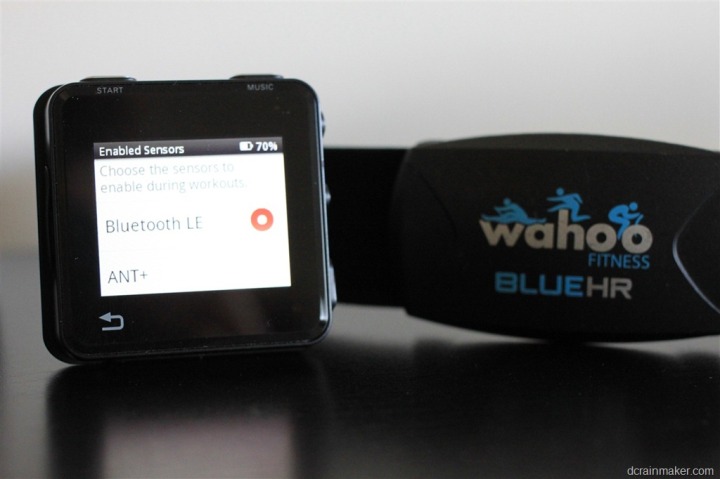
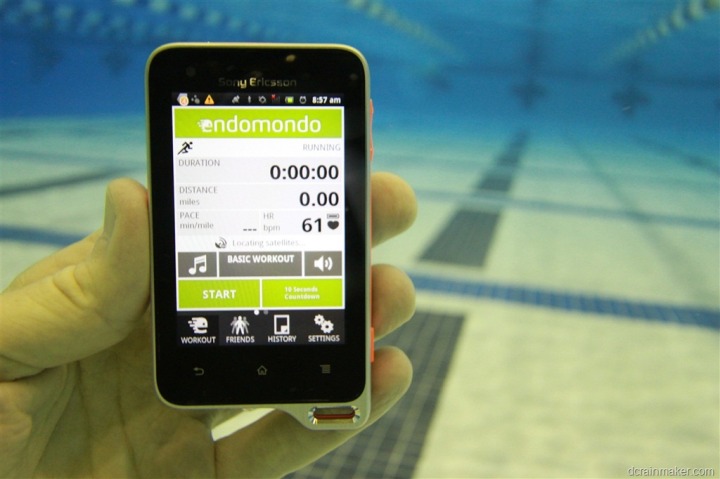
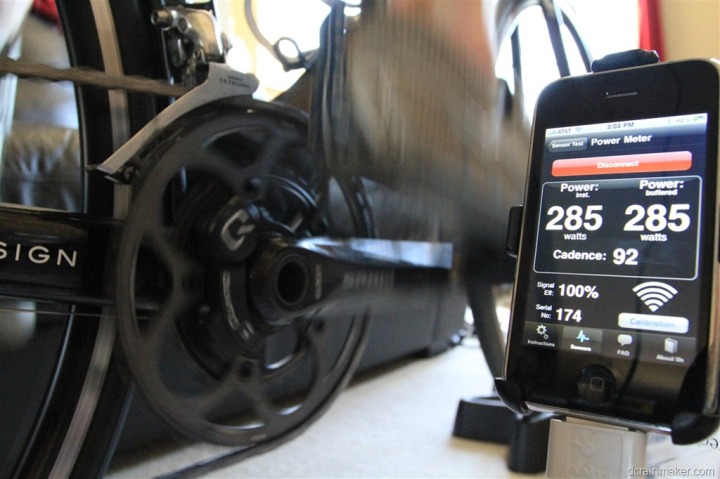
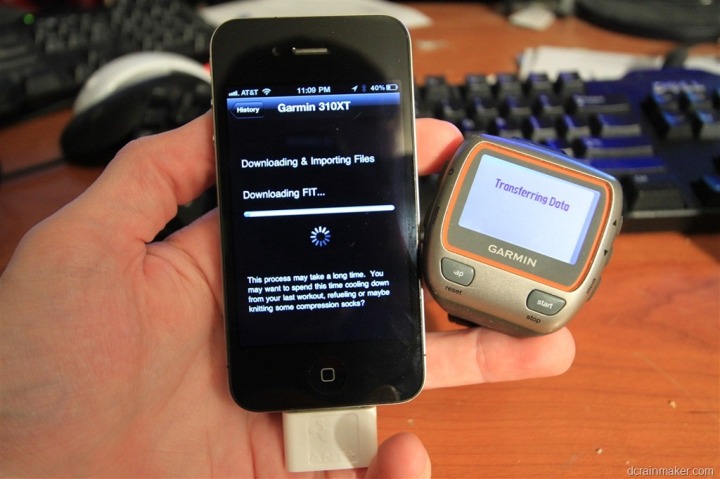
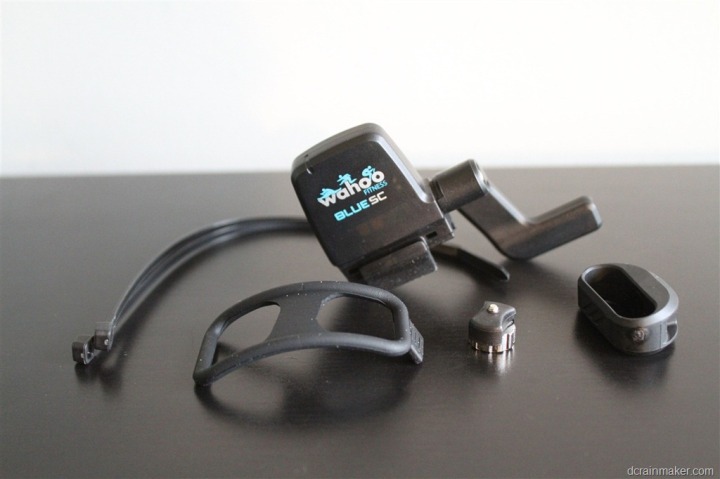
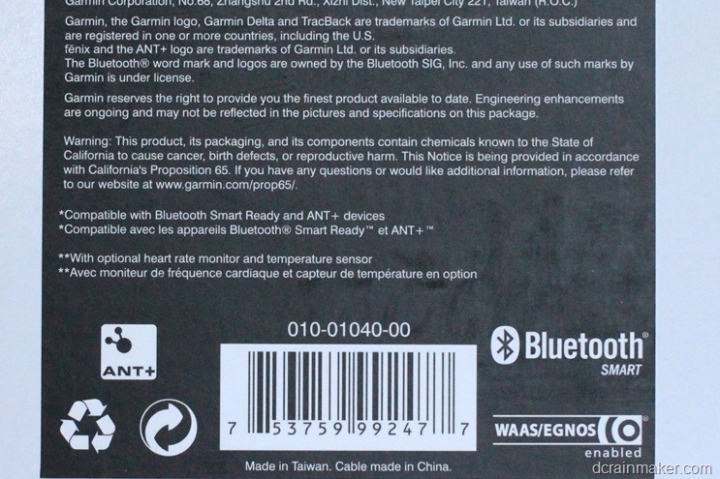





















Great post as usual.
I didn’t know much about this.
I’m trying to find applications to this outside of “workout” equipment and the possibilities are endless!
Nobody that I know does serious training or competing with a phone as their computer.
A phone really is a second-class citizen compared to a dedicated device.
My iPhone for example, isn’t even waterproof! Of course it can be installed into a case but that adds weight and bulk to an already unwieldy device.
Thanks Ray. Very helpful.
Thanks for this article, very helpful. The possibilities are endless but I really like the Motoactv approach too, even if you can only use one at a time.
I also use a regular Bluetooth Sports Tracker HRM as I always run with my Xperia Active phone (does not work with Motoactv but works with the Sports Tracker App).
If only all Apps would be dual compatible or at least follow the Motoactv lead!
I don’t really see phones as being useful computers for running (too big to put on your wrist), swimming (not waterproof), or cycling (poor battery life if the screen is always on). Possibly for indoor workouts, but most are just too big, too expensive, and not water resistant enough to use regularly outside. Cheaper, dedicated units are the future for sports IMHO.
I use an Xperia Arc with the garmin fitness app to record my workouts. The advantage, other than great background music, is the support for Glonass which no forerunner has yet, and for us northeners running in parks on cloudy days it makes a lot of difference. On a full charge I can track and play music for a good three hours, enough for a half marathon. However I need to monitor my pace as well: for that I use a forerunner 110 that shares the ant+ sensors (pulse and footpod) with my Xperia. So, yes, low energy bt is not for me. I will never go running without music and one device is not enough. At the same time I think also wants to simplify the upload to computers more than anything: I hate the ant+ dongle and wish for bt transfer.
I’m not a BTLE or ANT+ designer, but I do dabble in RFIC designs for different applications (and in fact work with one of the founders of Dynastream, one who is no longer with the company). From what I understand, the chipsets that currently support BTLE and ANT+ are mostly using the exact same radio circuitry, with some relatively small configuration changes. However those configuration changes are rather slow to make, so as a result you are pretty much locking the radio into BTLE or into ANT+ modes, so you can’t mix and match your peripherals. Of course on top of the RF blocks live the digital circuits to act as the real-time half of the protocol stack, with the software on top of that. However in general duplicating digital blocks and having multiple protocol stacks embedded in the device firmware comes at a much lower cost than duplicating the RF blocks.
Wasn’t sure where to post this, but this might be the post this best matches. Ray, you’re probably well aware of this, but I’ll share for all those Android users who read your site..
Some good news for Android users on new (ie Nexus 4) or just released devices with Bluetooth LE hardware is support in Android from version 4.3
From Google, the details are here.
Here’s to hoping I get Bluetooth sensors on my android phone before my wife upgrades from her iPhone 4 🙂
I sure hope Wahoo is onto this!
Yup, saw it as well. Good stuff!
The challenge is that’s highly limited to which handset makers release it for which phones, and then which carriers release it to their subscribers. Then there’s the apps supporting it.
Realistically, I don’t think we’ll see any meaningful movement until closer to Christmas from what a consumer can actually see.
That said – it’s forward progress!
Hi
I just got a Motoactv, do you know if you can have 2 BLE devices paired with it? like a HR strap (wahoo), and newest sport bluetooth headsets that also are Bluetooth 4 and BLE? Or it only allos me to pair one?
I know BLE is te future, so it makes sense to buy acessories with it, so they will work, when something better then the motoactiv comes along.
Thank you for your feedback
Great article and very accurate. My personal opinion is that the future depends on the mobile device manufacturer like Samsung and Apple an HTC, if they widely support BLE than ANT+ might be pushed out of this market in the long term. This will take a while, but we are already seeing a big uptake on BLE technology. Look at development platforms like the SensorTag from TI that enables developers to start immediately. I actually wrote a fitness app for weight training using this platform. Check out link to itunes.apple.com
Hi ,
Garmin is using bluetooth lte more and more.
They started with the approach S4 to use it with a iPhone to get messages on the watch.
This function is now available to the fenix/ tactix as well .
unfortionable is it only for iPhone, my nexus 5 (android 4.4 BT 4.0) does see the fenix but can’t connect.
I hope Garmin will support android to connect.
The problem with android that there are a lot of manufactures , all having their own specs.
regards, guido
“All of these power meters today run on ANT+ (…), and you want these devices to continue to work for years”
Don’t forget the Stages Powermeter. Their powermeters already support BOUTH technologies, Bluetooth LE and ANT+. They were already looking ahead while developing the product.
My guess: ANT+ is going to die. And all of the expensively bought powermeters in the past are going to be useless with new headunits.
This post was written about 3 months before Stages was announced.
True! Sorry about that.
Hi, Ray,
Please can you give advice, from your experience, how can I use only Bluetooth Smart hardware with TrainerRoad application, and also have the burnt calories calculated in some way or another ?
It is possible to use (or buy, if I don’t have already) the following devices:
– an electronic trainer controllable by Bluetooth Smart
– iPhone and/or iPad
– Bluetooth smart heart monitor strap
– Bluetooth smart BlueGiga USB dongle (that’s what the TrainerRoad application for PC says)
So the main questions here are:
– using the hardware described above, who calculates the calories I burn ?
– can I use Windows 7, or do I need Windows 8 ? Or do I need a Mac ?
Thanks and regards,
Mihai
I’ve tried several Nexus 4 phones with Wahoo’s RFLKT+ and none of them can hold a dependable link (from any distance) for more than a few minutes. Nexus 5 was fine in my test. I’d sure like to see Wahoo or Google address this.